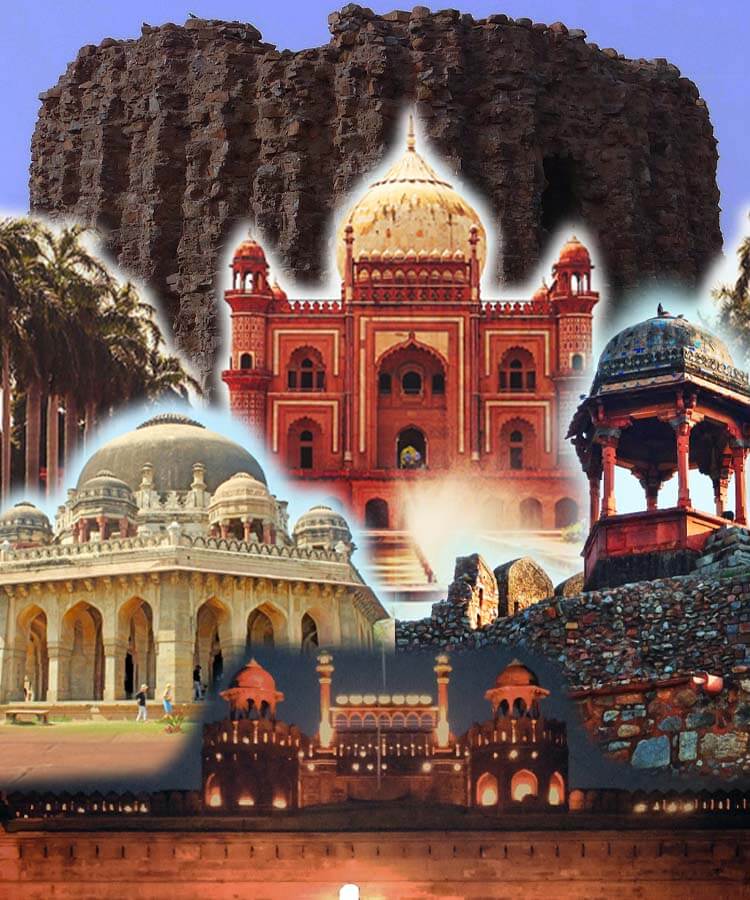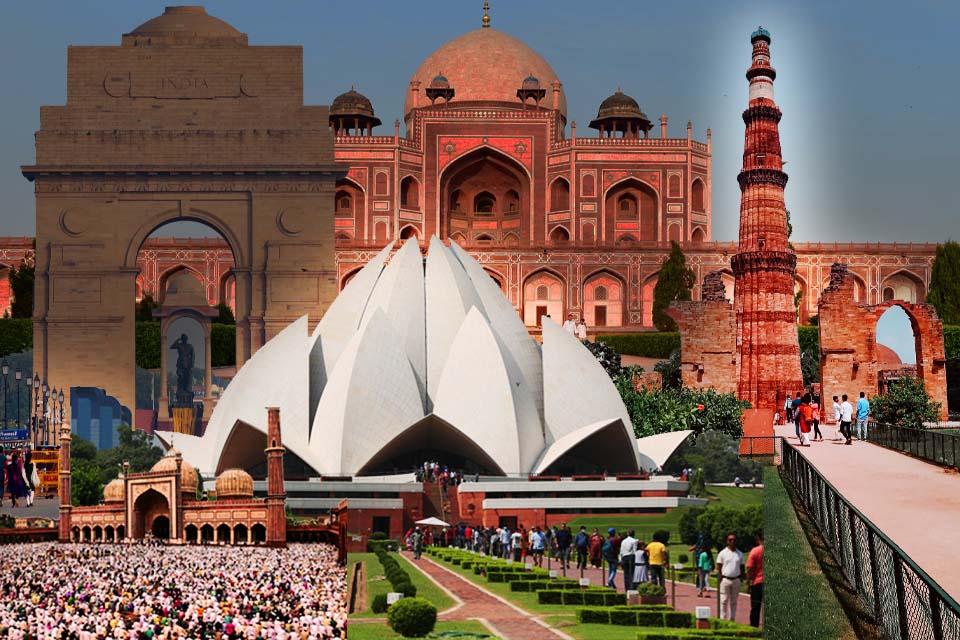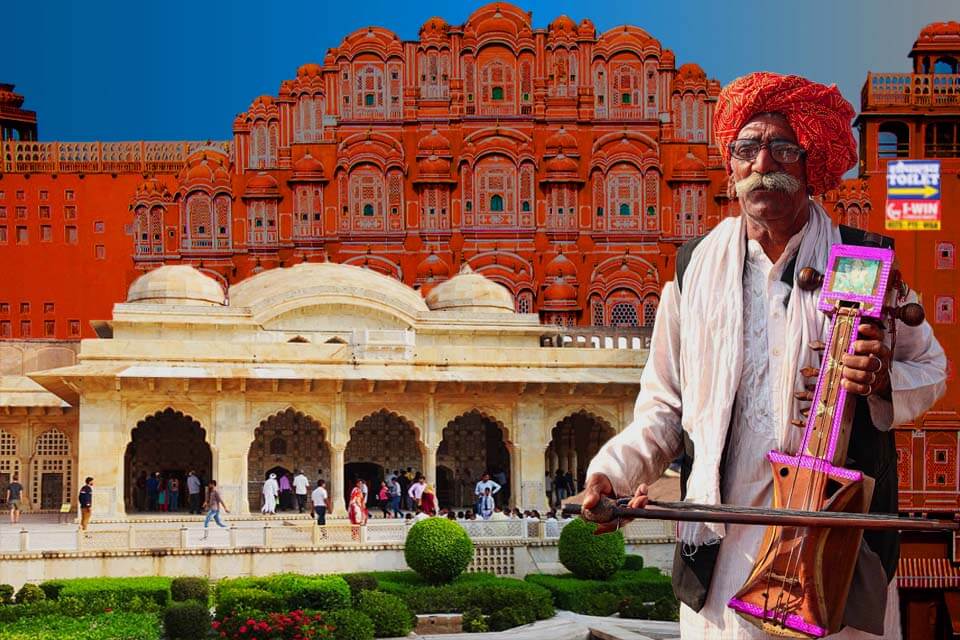10 Lesser-Known Historical Monuments in Delhi


New Delhi or Delhi is the capital city of India and is known for being the capital of 7 dynasties since medieval times including several Hindu kings, the Delhi Sultanate, the Mughals, and the British. This is why it is the perfect mix of cultures, history, food, and vibes. Today, various historical monuments and tourist attractions in Delhi tell the glorious tales of its own making and breaking attracting millions of tourists every year from all over the world. However, this article will discuss the lesser-known historical monuments in Delhi that are worth visiting.
Historical Monuments in Delhi
1. Tomb of Safdar Jang
Safdarjung Tomb was one of the last historical structures built by the Mughals. It was constructed in 1754 for Nawab Safdarjung of Oudh (Awadh). It was the first tomb and garden complex to be built for someone outside of the immediate Mughal family. It is believed that Nawab Safdarjung’s power over the Mughal empire was such that the emperor, Mohammad Shah Ahmed Shah, reached out to the Marathas to drive him out of Delhi in 1753.

After his death in 1754, his son Shujaud Daula requested the Mughals to build a tomb for his father with the help of an Ethiopian architect. Around 1826, the Bishop of Calcutta examined the tomb and found out that the light brown color inside the tomb was due to the food color that was used to paint the walls. The stone slabs used in the tomb were taken from the remains of Abdul Rahim Khankhana’s tomb, who was a poet and one of the Navratnas in Akbar’s court.
2. Purana Qila
Purana Qila is said to be one of the oldest forts in Delhi. Its construction was started by the Mughal emperor Humayun and continued by Sher Shah Suri of the Sur Dynasty after he defeated Humayun. It is believed to be located over the city of Indraprastha from the Mahabharata.

Photo Credit: CC BY-SA 4.0
The Sher Mandal, one of the first observatories of Delhi is also situated inside the fort complex. It was used by Humayun as his personal library and observatory. The overall fort is surrounded by other historical structures including Kairul Manzi, a mosque built by Akbar’s nurse Maham Anga, and Lal Darwaza, built by Sher Shah Suri as a gate towards the city of Shergarh.
3. Zafar Mahal
Zafar Mahal, popularly known as Lal Mahal, was among the last historical monuments in Delhi to be built by the Mughal Dynasty. It is located in Mehrauli, South Delhi. The construction of Zafar Fort was started in 1842 by Akbar Shah II and completed in 1847 by Bahadur Shah Zafar, the last Mughal emperor.

Photo Credit: CC BY-SA 4.0
It is said that Bahadur Shah Zafar wished to be buried at the Zafar Fort, or the Dargah of Khwaja Qutubuddin Bakhtiar but was sent to prison in Rangoon, Myanmar, and buried there only. He was especially attached to this fort because of the tomb of Qutb Kaki, of whom he was a disciple.

Tourist Attractions in Jaipur
Jaipur was established by the Kachwaha Rajput king Jai Singh II as his capital on 18 November 1727. From then till India’s independence...
4. Qila Rai Pithora
Also famous as Lal Kot, the fortified complex is termed as the First City of Delhi. It was constructed during the reign of Anangpal I of the Tomar Dynasty.

Photo Credit: CC BY-SA 3.0
According to the inscriptions found on the famous iron pillar of Mehrauli, the pillar was brought from Mathura and fixed in Delhi in 1052. Lal Kot was built around the pillar, with a circumference of 2 miles and 60 feet high walls, and completed in 1060. The complex also includes the very popular tourist place Qutub Minar. The Tomar, Chauhan, and slave Slave Dynasties ruled from this fort only.
5. Tomb of Adham Khan
The Tomb of Adham Khan is popularly known as Bhool Bhulaiya. Adham Khan was a general of Mughal emperor Akbar and the son of his nurse Maham Anga. In 1562, it is believed that Adham Khan killed Akbar’s favourite general, Ataga Khan, and was executed by being thrown from a wall of Agra Fort repeatedly till he died.

Photo Credit: CC BY-SA 4.0
Adham Khan’s Tomb was, therefor, built in 16th century by the orders of Akbar. On the 40th day of mourning his son’s death, Maham Anga also passed away and both Maham Anga and Adham Khan’s grave resides in the tomb. The structure is built in octagonal design which was different from other Mughal tombs and dedicated to the traitors.
6. Salimgarh Fort
Salimgarh Fort was built during the pause in the Mughal reign, when Sher Shah Suri established the Sur Dynasty after defeating Humayun. It was constructed by Islam Shah Suri, popularly known as Salim Shah Suri, in 1546. It is said that Mughal emperor Humayun camped here for 3 days before attacking Delhi to regain his rule in 1555.

Photo Credit: CC BY-SA 3.0
It was also used as a place for a temporary stay of the Mughal rulers during the ongoing construction of Red Fort and Shahjahanbad. Mughal emperor Aurangzeb even utilized this fort as a prison till 1857, before the British took control and converted it into an army camp.
7. Adilabad Fort - Historical Monuments in Delhi
Adilabad Fort was built in 1328 by Mohammad Bin Tughlaq as a symbol of his power after the death of Ghyasuddin Tughlaq, his father. It is built very close to, and in similar style with Tughlaqabad Fort and provides a spectacular view of the city of Tughlaqabad.

Photo Credit: CC BY-SA 3.0
It is believed by most that Mohammad Bin Tughlaq conspired his father’s death to seize the throne of Delhi, and hence constructed the fort to symbolize his might as the greatest ruler of Tughlaq Dynasty. Adilabad Fort, however, remains unexplored and unknown to many even after being located so close to the very famous Tughlaqabad Fort. It is also one of the very few structures built during the reign of Tughlaq Dynasty.
8. Feroz Shah Kotla Fort
Feroz Shah Kotla was built by Feroz Shah Tughlaq in 1354, when he decided to establish his capital in Firozabad. The Topra Ashokan Pillar, originally from Topra Kalan in Yamunanagar and built by Ashoka, is also located here. The famous Arun Jaitley Stadium of Delhi was initially named after Feroz Shah Kotla.

Photo Credit: CC BY-SA 4.0
The fort is also an important place of worship to devotees with certain beliefs. They believe that djinns reside within the dungeons beneath the fort and come to worship them and ask for solutions. The myth became popular as many people started writing letters and worshiping djinns in their own ways using candles and incense sticks to make wishes.
9. Siri Fort
Siri Fort was built in 1303 by the greatest ruler of the Khilji Dynasty, Alauddin Khilji, to protect Delhi from the invasion of Mongols. According to a popular myth, the fort is called ‘Siri’ as its foundation was built over the heads (‘sir’) of about 8000 Mongols who were killed in the war. The fort was also known by the name Darul Khilafat, meaning Seat of Caliphate, and was later merged with the forts in Jahanpanah.

Photo Credit: CC BY-SA 3.0
During the building of the Asiad Village Complex in 1982, several parts of the fort were unknowingly buried. Now, the ruins of the Siri Fort are surrounded by several auditoriums, including the Siri Fort Auditorium, and Siri Fort Sports Complex.

DELHI Darshan by AC Bus
If you are short on time, limited budget and want to see all the main tourist attractions of Delhi in a day or two then Delhi Darshan Tour Package will be best for you...
10. Ala-i-Minar
Ala-i-Minar or Alai Minar stands close to the Qutub Minar, very popular historical monuments in Delhi and one of the tallest minarets in the world. Also known as Vijay Sthamb or the Tower of Victory, it was an unfinished project of Alauddin Khilji of Khilji Dynasty. He wanted the tower to be built as a symbol of his victory at one of the campaigns in the Deccan and for it to surpass the height of Qutub Minar.

Photo Credit: CC BY-SA 4.0
However, he died in 1361, and the building was left abandoned. Khilji’s successors as well were unable to finish the structure. Now, we only see the circular base of the minar which was the completed portion of the tower and stands at a height of only 23 metres. Along with tower, Alauddin Khilji also planned on expanding the Quwwat-ul-Islam mosque to nearly four times his size. Ala-i-Minar is located within that expanded area of the mosque.
Other Historical Monuments in Delhi
Delhi has a very strong historical background and has been ruled by many rulers. There is a saying that Delhi was destroyed many times and rebuilt many times. That is why there are many monuments and buildings that have stood strong over time, some being vandalized or destroyed by invaders. The names of some other historical monuments in Delhi are Jahanpanah Fort, Chhota Qutub Minar, Shergarh, Lodhi Tomb, Lado Sarai, etc.


